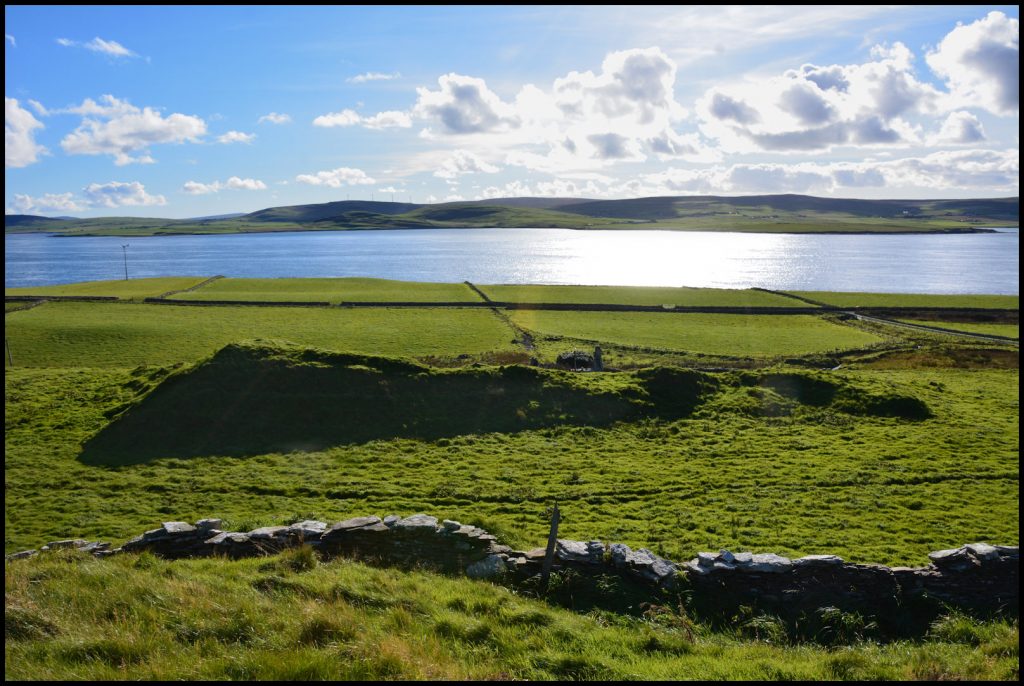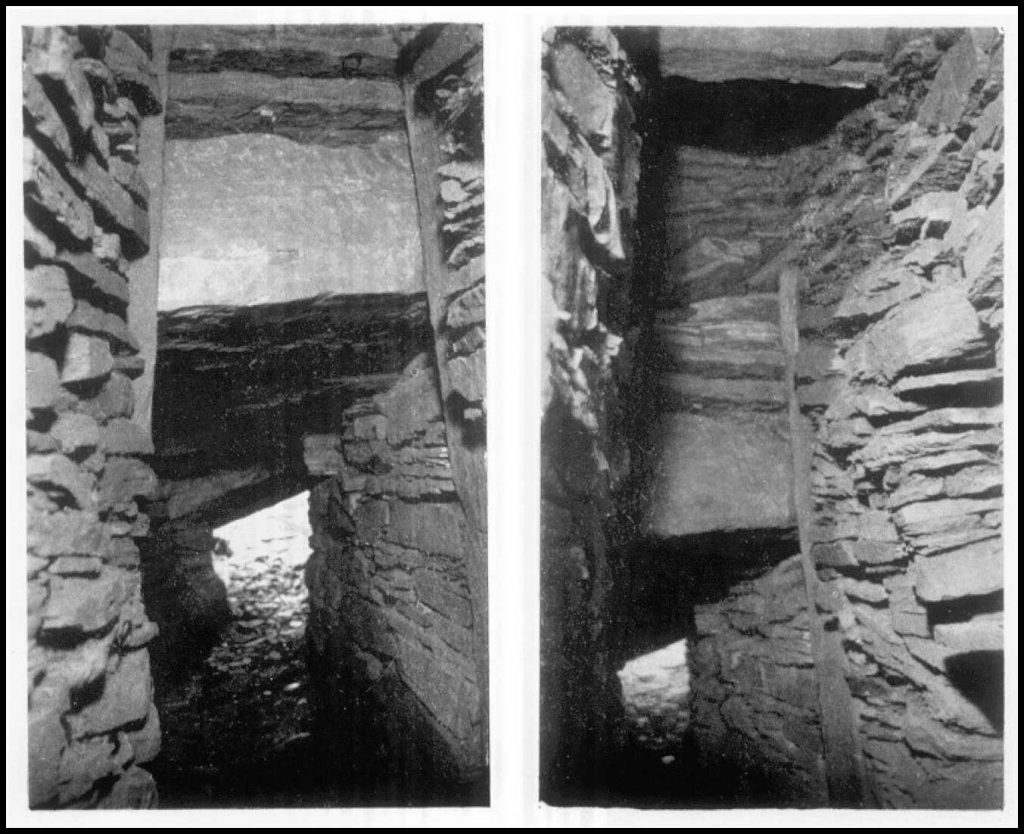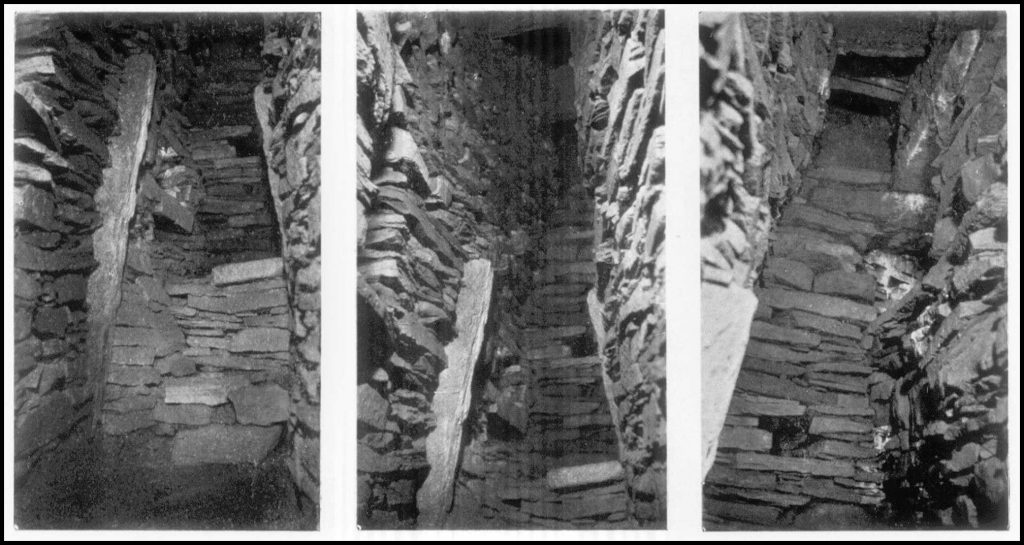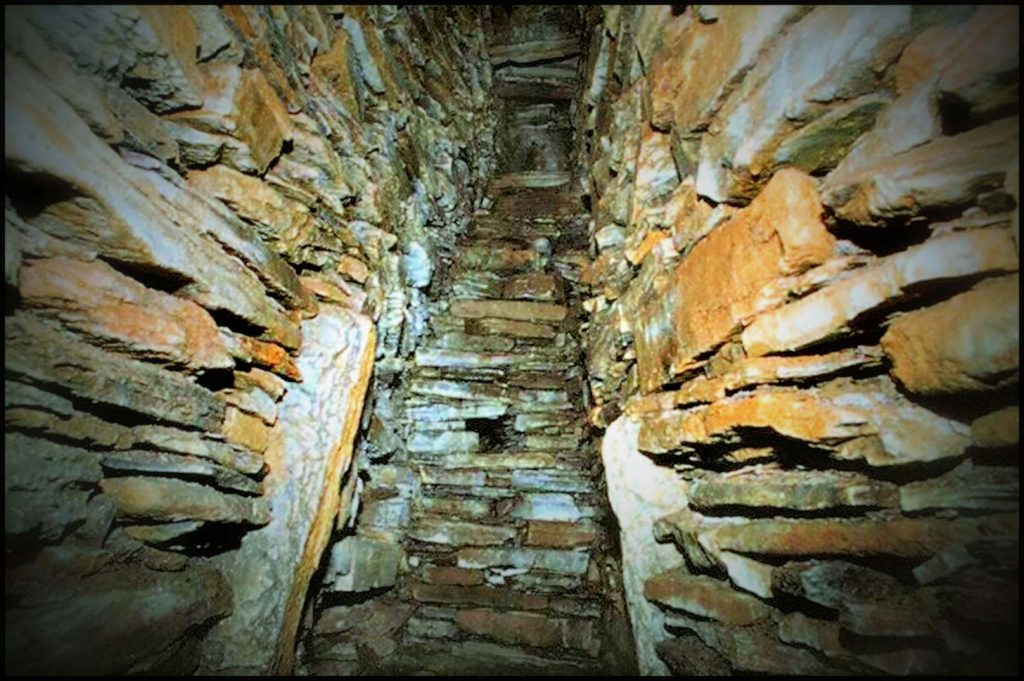The Knowe of Lairo, as it is spelled on Ordnance Survey maps, is a conspicuous long mound to the east of Hullion and overlooking Eynhallow Sound. It stands below the house of Laro, on the precipitous edge of a relatively level terrace some 60 feet above sea level. Lying approximately east and west, is about 150 feet long and is conspicuously broader and higher at its eastern end. Excavations carried out in 1936 resulted in the discovery of a Neolithic long-horned chambered cairn, possessing unique features at the east end of the mound, exceptional in its height of 13½ feet, in its length of 17 feet, and in its ‘inner walling’ features.
The chamber is entered by a lintelled passage that expands vertically and laterally towards the interior. The primary section is 14¾ feet long, 1ft 11ins high at the mouth and 4 feet at its inner end. It is spanned by seven massive lintels. The third from the mouth had, however, broken while the tomb was in use or even in building. To support it a strip of secondary walling had been built up against the primary northern face of the corridor, leaving a restricted passage at this point averaging 1ft 8ins high by 1ft 5ins wide. Both sides of the passage have been prolonged for some 2½ feet by low walls not bonded into those of the primary section. This extension too was probably lintelled over with lighter slabs 2 feet or less above its floor: one of these lintels still straddles the passage though out of position; a second was found lying under a heap of debris.
The infilling walls on either side of the chamber run up nearly vertically to the roof save for a slight inward corbelling on the south. They had been further strengthened by transverse slabs, 7 to 10½ feet above the floor, which span the upper space of the chamber like rafter tie-beams. By this ingenious device the parallel infilling or lining walls are tied together. Indeed we have here in a Neolithic burial chamber an obvious anticipation of the distinctive feature of broch architecture that gives solidity to the hollow walls of the Pictish towers. In this case, however, the ties – or struts – had not functioned too well, as the infilling walls had fallen inwards, slipping along the ties, which remained in situ, and away from the original walling of the chamber.
A stone axe and some sherds of pottery were found on the floor at the entrance to one of the chambers between the portal slabs. Other recesses also contained evidence of human burial remains, and in a two-storeyed ambry a skull and bones of a burial were discovered. The skull is now held by the Marischal Museum in Aberdeen.
Reference. Text & b/w images:-
The Knowe of Lairo, Rousay, Orkney, Walter G Grant and D Wilson.
Proceedings of the Society of Antiquarians of Scotland, January 1943.



